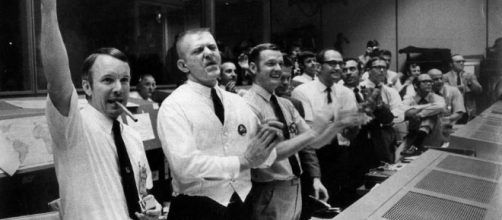For anyone who was of age during the Apollo flights to the Moon, Mission Control in Houston is an iconic place. It was in Mission Operation Control Room 2 (MOCR-2) located on the third floor of what in Building 30 at the Johnson Spaceflight Center that the crew of Apollo 11 reported that they had landed on the moon and later the first images were seen of Neil Armstrong and Buzz Aldrin descending to the lunar surface. It was there that the words “Houston we have a problem” were first heard during the mission of Apollo 13.
MOCR-2 has not been used for any missions since the middle of the space shuttle era.
Another control room monitors operations on the International Space Station. A new control room is being prepared for commercial spaceflights and the eventual missions of the Orion deep spacecraft. But the venerable Apollo-era mission control is being developed as a historical artifact, its equipment to be restored to what the room looked like when men walked on the moon with consoles manned by people in white shirts and dark ties. The restoration is taking place as part of a celebration of the 50Th Anniversary of the first moon landing to be held in July 2019.
Three men comprised each Apollo mission, but they were backed up by numerous engineers, flight controllers, and other technicians on the ground.
The concept was unique in handling high-risk missions of discovery, the idea being that the communications and computer technology of the time could handle a lot of functions of a space voyage, with only the hardware and crew members that were necessary on the spacecraft. Every function of a spaceship in flight was continuously monitored by men sitting at consoles that read out numbers. A CAPCOM, always an astronaut, preferably someone who had flown in space before, would communicate directly with the spacecraft. The Flight Controller supervised everything like a conductor does an orchestra.
Of course, everyone who has seen the classic film “Apollo 13” has some idea of the role of a mission control center in the Apollo era.
The men (and it was almost always men back then) who took shifts during a mission to the moon were as heroic, in their own way, as the astronauts.
Soon, tourists who visit Space Center Houston and take the tour that includes Building 30, now renamed the Christopher C. Kraft Mission Control Center after the man who established the mission control operation, will be able to see a little bit of history, which was reality almost 50 years ago.

